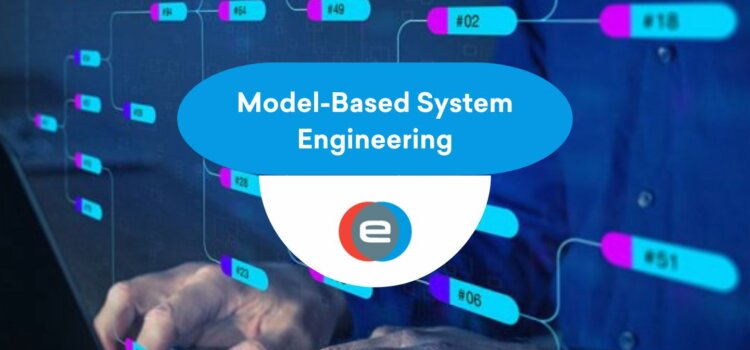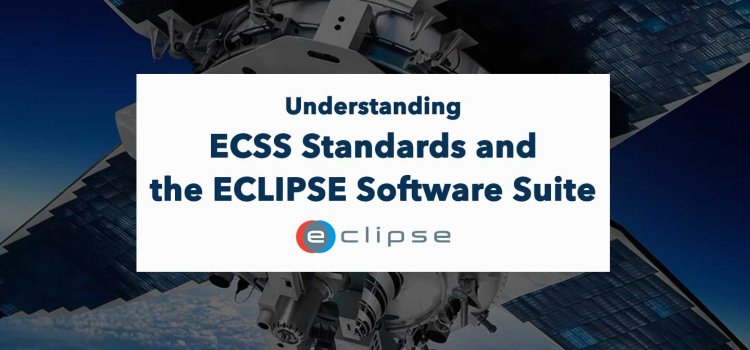
Model-Based System Engineering: Pros and Cons
01 Feb, 2022
As the world we live in evolves, everything that functions must also evolve. So, it’s no surprise to see that innovations and new technologies are springing up to bring ease to otherwise limited projects.
Model-based system engineering is the new buzzword in space project control, and we explore its advantages and disadvantages in this article. Although we are used to traditional document management systems, we will look at what a model-based system brings in this article. Now, let’s dive into all you need to know about MBSE and compare it with DBSE.
What is Model-Based System Engineering
Model-Based Systems Engineering is a methodology focused on leveraging and creating domain models as its main means of communication between engineers. Unlike Document Based Management Systems (DBMS), the MBSE uses formalized system elements to design, analyze, verify, and validate the system design. It begins from the first phase of the life cycle and continues to the development and later phases.
Model-based management system engineering combines three different concepts to create a highly functional system, and it combines the concepts of modeling, systems engineering, and systems thinking.
Differences between Document-Based System engineering
In document-based system engineering, authors developed countless documents to portray the system design. These documents flexibly include software, security, safety, hardware, system behavior, and other relevant disciplines.
If you want to edit or change a document, you must open and change the original document. In that way, a DBMS system needs a Document Management System (DMS) to be effective, which can help to reduce costs significantly.
A Document-Based Management System (DBMS) relies on textual documents as the main mode of information exchange between team members. Each document is a self-contained unit in this system, and there is little or no connection between them.
Benefits of Model-Based System Engineering
MBSE is used in various industries, and system engineers describe its advantages both from a user and a provider standpoint. The following are some of the benefits of using MBSE.
Integration time and effort
A model-based system is an interconnected system. When changes are made to a model, all the dependents are automatically updated. In a DBMS, any change to a document requires that the document be edited and all related documents are updated. Therefore, the time required to make changes is reduced in MBSE.
Communication
The use of models as the primary means of communication between team members improves understanding and allows for a more detailed level of communication. Diagrams and pictures make it easy for all stakeholders to understand the system.
Fewer documents
The use of documents brought the challenge of information and product quality to the limelight. Documents must be error-free so that no rework is necessary, leading to delays and increased costs. Worse, an error in a document can propagate and cause more errors downstream. Therefore, reviewing documents is a critical process that can take up a lot of time if a proper document management system and the process is not in place.
Fixed quality standards
Once the quality level is determined and defined, anything less or more cannot be accepted; every team must work with this set standard. The use of MBSE ensures that these quality practices are followed to the last drop even though a diversity of people are controlling one project. These set standards give less flexibility, which can be good or bad, depending on the perspective.
Developmental risks
In MBSE, there is only one built-in source for all these specific disciplines and information. This single source uses model elements to reduce the risk of problems arising in future lifecycles. All stakeholders always enforce a set standard of use, which removes inconsistency when documenting the system.
Consistency in information
The challenge of complexity has existed since the inception of Systems Engineering. MBSE solves this challenge by allowing the system engineer to create a much more comprehensive vision of the system. This easy to comprehend model gives room for much better consistency in information.
What Are the Disadvantages of MBSE
Model-based System Engineering also brings its own set of challenges and disadvantages. Now let’s focus on the disadvantages of MBSE.
Usability issues
Usability is one of its major issues, and the approach requires more effort to use, and simple characteristics are made more complex. If MBSE is better than the already existing systems engineering and project management approaches, it shouldn’t be more challenging to navigate and utilize.
Rigid framework
Like every other model, MBSE has a foundational framework upon which every other thing is built. Although the team can make modifications, that foundational framework is hard to change, and there are two sides to this situation. If there’s a problem in the foundation, the entire system will be affected, and it will be difficult to make corrections without canceling or restarting the whole project.
Flashy not always functional
MBSE is seen as a “pretty” approach as it uses interactive components to represent the system. This can be easy to use for people within the organization but can be confusing and overwhelming for those trying to understand and review it from the outside. The outcome of recalculations might not reflect what is happening in the system, and this can be misleading and dangerous since stakeholders may make decisions without understanding the process.
Model complexity
As mentioned earlier, MBSE requires a good understanding of how the model works to get the most out of it. If users do not understand how the model works, they will have to trust the people who built it, which is not always a good idea. Users may tinker with models incorrectly, resulting in incorrect calculations and an unjustified perception of accuracy. Only experts can make the most out of MBSE, leading to misunderstandings, high responsibility, and a more increased individual workload.
New concept
Since MBSE is a relatively new concept, many people are unaware of its workings. Misuse is common in such cases and can lead to catastrophic and expensive failures. Misunderstanding can result from relying on models, leading to adverse outcomes. New models have to go through trial and error, and they might not be as effective as the old ones.
Stakeholder buy-in
MBSE requires buy-in from all stakeholders to be successful. Not all stakeholders will be willing or able to adapt to the new way of working. Next to this, the learning curve for MBSE is relatively steep, which means that not everyone will be able to use it from the get-go.
The system is the limit
While the team can import technical documents into document management systems, you can’t import documents into a model-based system. The system can therefore be limited to what the system allows. External technology that offers new ways to design, calculate, and visualize system behavior can’t be used due to its model-based nature.
Complexity of system and software updates
Hosting of models is done in software; therefore, updating the software will also require updates to the models. This can be a complex and time-consuming process, especially if multiple models need to be updated. With a document system, the documents will always remain the same whether the software is updated or not.
Static overtime
As the model is built upon a static framework, it becomes static over time. This can lead to a lack of agility and the inability to respond to changes in the environment. A change in the model will require a rethinking of everything that has been done before, which can be a time-consuming and challenging process.
Lack of standardization
There is no standard for MBSE as of yet. This can lead to different approaches used by different organizations and confusion and lack of alignment. Criteria are very important for three reasons; they ensure that quality is assured, make it easier to build on previous works, and help with the transfer of knowledge.
Scaling issues
As the size of the project increases, the complexity of the MBSE model also increases, which can lead to problems. The model might not be able to handle the project’s complexity, which can lead to several problems. The model will have to be redesigned, which can be difficult and time-consuming. Since it will affect the entire project, it will have to be approved by all stakeholders, leading to disagreements.
Effort to use
The approach requires more effort to use, and simple characteristics may be more complex than needed. This can lead to frustration and a feeling that the approach is not working. The extra effort might also not be worth it, primarily when traditional methods work just fine.
Snowball effect
If there is a problem with the foundation, the entire system will be affected. This can be a problem if the foundation is inaccurate or there are errors in the model. The snowball effect can lead to several issues in the project and can be challenging to fix.
Review issues
As the model is the project’s foundation, all changes need to be reviewed, and this can lead to a bottleneck as the review process will slow down the project. The reviews will also be very important to ensure that the changes are accurate and will not harm the project.
Incorrect assumptions
The model is based on several assumptions that might not always be correct, which can lead to inaccurate results and several problems in the project. The assumptions need to be validated regularly to ensure that they are still valid.
Different and unknown risks
MBSE will bring different risks than DBSE. Quality assurance, project managers, and risk managers will need to be aware of these risks and have a plan to mitigate them. Due to the new nature of MBSE, there might be various unknown risks related to the process, stakeholders, and the models themselves, which makes risk mitigation planning harder.
Costly to implement
MBSE can be costly to implement and maintain; you will need a dedicated system that is well-maintained, staffed with experts, and up-to-date with changes in the industry. Many organizations might find it hard to justify this cost when traditional methods work just fine. MBSE systems require you to work within one system and evolve that system, while a DBSE system can use other platforms and import the assets quickly.
Conclusion
Model-based system engineering has allowed systems engineers to shift from traditional document-based system engineering. Although MBSE has its advantages, it also has many significant disadvantages that you should take into account. Switching costs, lack of standardization, scaling issues, snowball effect, incorrect assumptions, and different and unknown risks are some of the main disadvantages of MBSE.
At ECLIPSE Software Suite, we will keep exploring the MBSE and its advantages and disadvantages. Currently, our DBSE remains to be the most popular DBSE system in the space industry. Learnings from MBSE systems are now explored and implemented into our ECLIPSE Software Suite if found to benefit.
We hope you enjoyed reading this article; if you have any questions, don’t hesitate to contact one of our experts.



